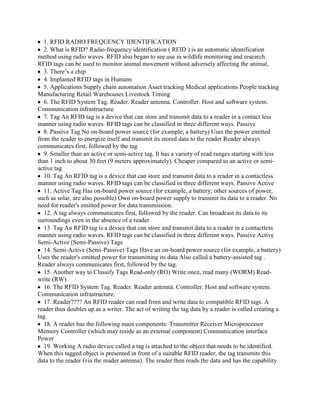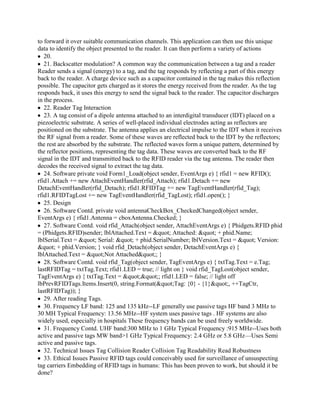RFID (radio-frequency identification) uses radio waves to automatically identify objects. RFID tags can be classified as passive, active, or semi-active tags depending on their power source. The RFID system consists of tags which store and transmit data to readers via radio waves. Readers then send the data to a host system over communication channels. While RFID provides advantages like contactless identification without line of sight, there are also disadvantages like interference and limitations on reads that must be addressed.


